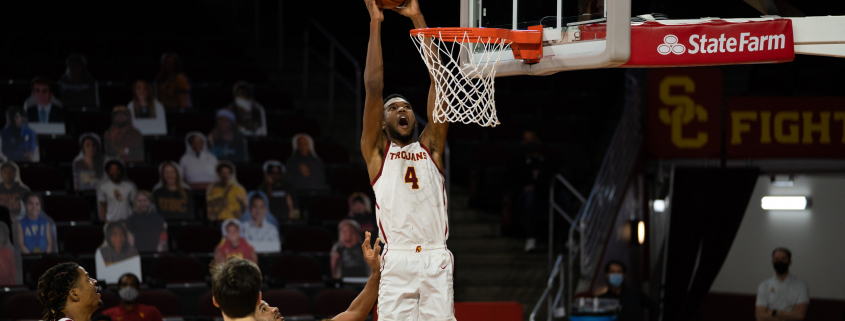Varsity sports teams remain critical to top universities

The men’s basketball team is coming off a season that included 25 wins and an NCAA Tournament Elite Eight appearance for the first time in 20 years. A university’s athletics teams consistently serve a beneficial purpose to the school and highly successful seasons, such as the one the Trojans just had, highlight it.
Since the Varsity Blues scandal, USC’s illustrious athletic department has come under intense scrutiny from students, administrators and the outside world. It may have left some people wondering why top universities lower their admissions standards for athletes or maybe even why they allocate so many resources to sports programs at all.
Men’s basketball answered those questions this season. It starts with winning games. The sports teams need adequate resources in order to be highly competitive and when given these resources they turn out results. It is unmistakable that winning contributes to higher school spirit.
This enhanced school spirit helps stimulate the on campus community and can be an essential part of students’ social lives. Prior to the pandemic, having winning football and basketball teams brought thousands of people to USC on game days, creating buzz and a more vibrant campus.
Winning seasons also lead to advertising opportunities. Winning teams will have more chances to be on primetime national television slots, giving the university a chance to promote themselves to a wide audience during commercials.
The uniforms also serve as advertising. During Villanova University’s men’s basketball team national championship run in March 2018, the school recorded 875,000 visitors to the university website. This came out to be a 108% year over year increase. Villanova basketball also won the national championship in 2016 and accordingly saw a 21% increase in total number of applications for 2017.
The success of a school’s athletic programs also brings in money, which has an undeniable importance to the functionality of a university. Big seasons bring in more sponsors and better television deals and help to engage alumni and solicit donations from them. For a school like USC, this means more money for financial aid programs, new classrooms, community outreach efforts and the like.
In 2016-17, a year in which the football team won the Rose Bowl, the athletic department brought in a record revenue of $113.2 million. The football team alone brought in $60 million, an $8 million increase over the year before in which they did not win a trophy. Expenses for the football team were $30 million that year, meaning they brought in $30 million for the university.
In order to reap these benefits, universities, including USC, must continue to invest in their athletics programs so they have the resources to get the best recruits, coaches and facilities, all of which will lead to more wins.
It is clear there are strong tangible benefits to top academic universities such as USC continuing to invest in their varsity athletics. The money, advertisement opportunities, alumni engagement and community building are all great effects of having high level sports teams. However, it must not be lost upon universities that their athletes are a significant part of the student body, and it is about the individual athletes more than about any benefit the university receives from their play.
While universities continue to benefit from the work of their unpaid athletes, they must remember to provide the resources they need to thrive off the field as well as on it.

